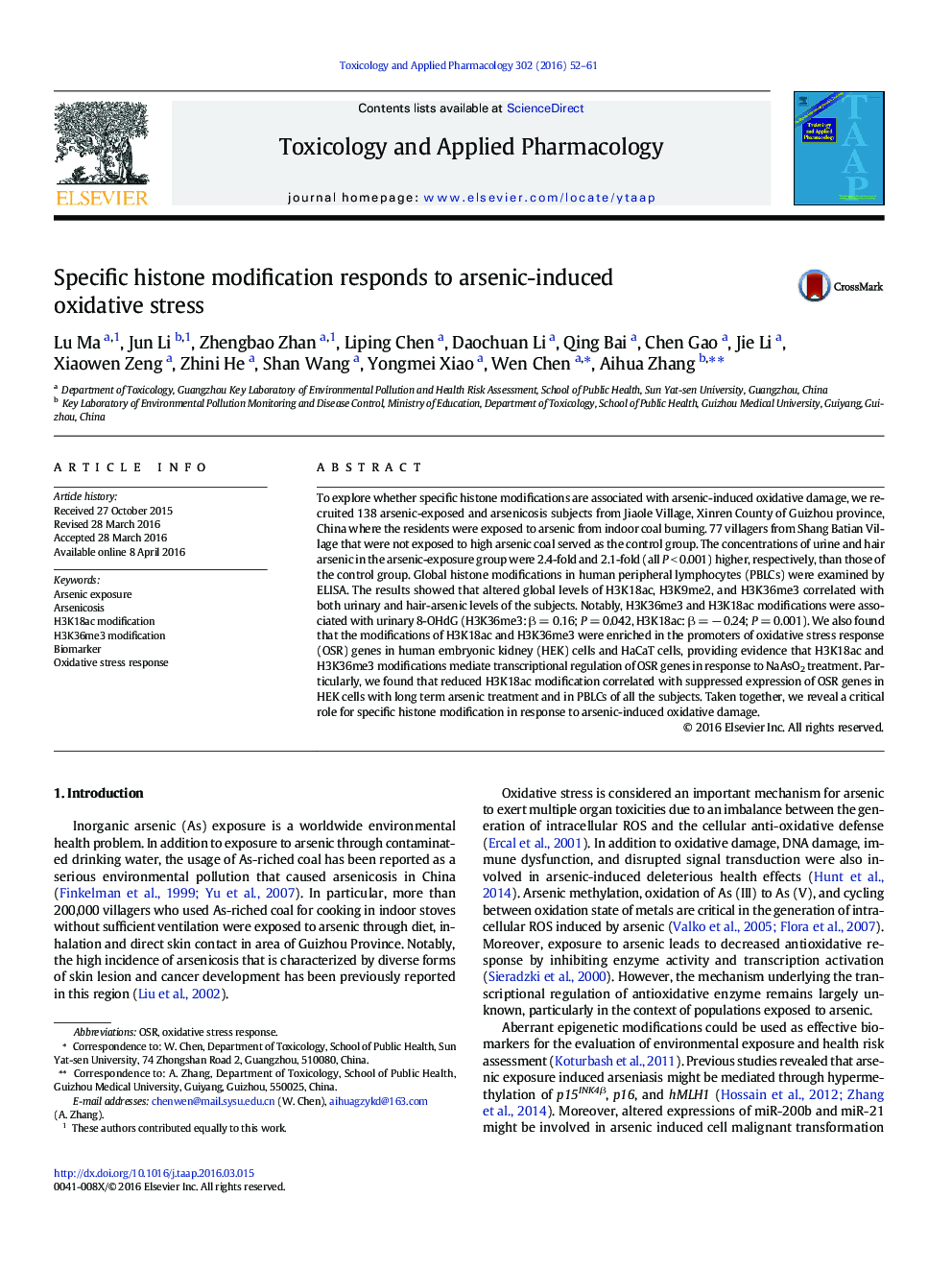| کد مقاله | کد نشریه | سال انتشار | مقاله انگلیسی | نسخه تمام متن |
|---|---|---|---|---|
| 2568093 | 1561160 | 2016 | 10 صفحه PDF | دانلود رایگان |
• H3K18ac, H3K9me2 and H3K36me3 were associated with arsenic exposed levels.
• H3K18ac and H3K36me3 were correlated with oxidative damage induced by arsenic.
• H3K18ac and H3K36me3 might involve in transcriptional regulation of OSR genes.
• Dysregulation of H3K18ac and H3K36me3 might be biomarkers of arsenic toxicity.
To explore whether specific histone modifications are associated with arsenic-induced oxidative damage, we recruited 138 arsenic-exposed and arsenicosis subjects from Jiaole Village, Xinren County of Guizhou province, China where the residents were exposed to arsenic from indoor coal burning. 77 villagers from Shang Batian Village that were not exposed to high arsenic coal served as the control group. The concentrations of urine and hair arsenic in the arsenic-exposure group were 2.4-fold and 2.1-fold (all P < 0.001) higher, respectively, than those of the control group. Global histone modifications in human peripheral lymphocytes (PBLCs) were examined by ELISA. The results showed that altered global levels of H3K18ac, H3K9me2, and H3K36me3 correlated with both urinary and hair-arsenic levels of the subjects. Notably, H3K36me3 and H3K18ac modifications were associated with urinary 8-OHdG (H3K36me3: β = 0.16; P = 0.042, H3K18ac: β = − 0.24; P = 0.001). We also found that the modifications of H3K18ac and H3K36me3 were enriched in the promoters of oxidative stress response (OSR) genes in human embryonic kidney (HEK) cells and HaCaT cells, providing evidence that H3K18ac and H3K36me3 modifications mediate transcriptional regulation of OSR genes in response to NaAsO2 treatment. Particularly, we found that reduced H3K18ac modification correlated with suppressed expression of OSR genes in HEK cells with long term arsenic treatment and in PBLCs of all the subjects. Taken together, we reveal a critical role for specific histone modification in response to arsenic-induced oxidative damage.
Journal: Toxicology and Applied Pharmacology - Volume 302, 1 July 2016, Pages 52–61
